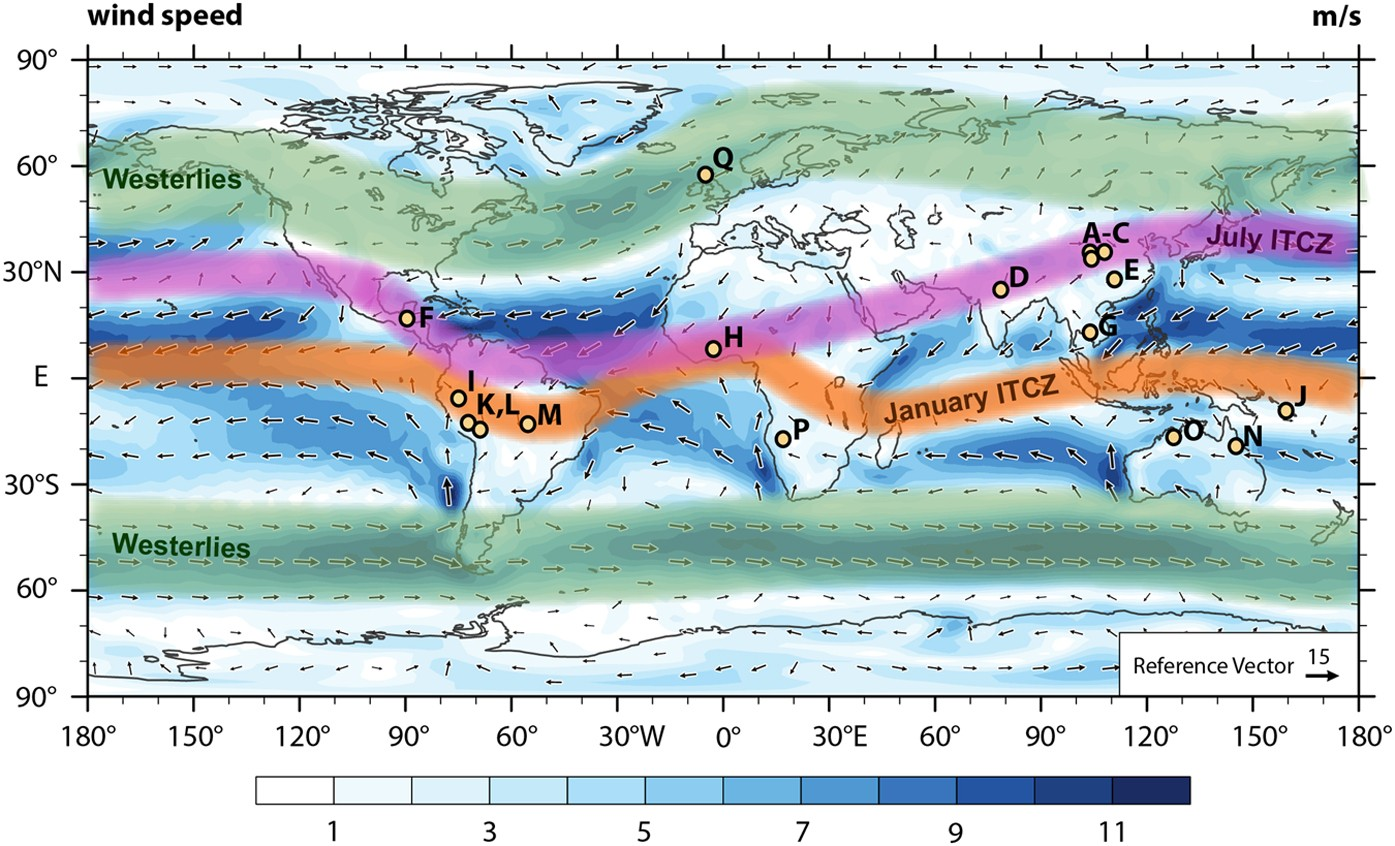
By 2100, billions of people are at risk of facing more flooding, higher temperatures and less food and water. A new study found that the climate change will cause the Earth’s tropical rain belt to shift in areas that cover almost two-thirds of the world, potentially threatening environmental safety and food security for billions of people.
The tropical rain belt is a narrow area that circles the Earth near the equator where trade winds(信风) from the Northern and Southern hemispheres meet. Areas along the equator are among the warmest on Earth, and this, paired with the winds, creates significant humidity(湿热) and precipitation.
“Our work shows that climate change will cause the position of Earth’s tropical rain belt to move in opposite directions in two longitudinal(经度的) sectors that cover almost two thirds of the globe,” lead author Antonios Mamalakis said, “a process that will have chain effects on water availability and food production around the world.”
In a video, Mamalakis explained the belt will likely shift between 2075 and 2100. This will likely result in “increased drought stress over Madagascar and intensified flooding over southern India,” Mamalakis said. Madagascar is already seeing the devastating impacts of continuous drought. Half of the region’s population has been impacted by several years of drought, and many families have been forced to live off of eating insects. The area has the 10th highest rate of stunting in the world, with almost half of Madagascar’s children under five years old suffering from malnutrition(营养不良).
Greenhouse gas emissions play a significant role in climate change, as it traps heat radiating from the sun. Fellow researcher James Randerson said the effects of this will be felt “faster” in certain areas, including Asia. The researchers have said that with this information, the next step is to figure out more specifically how these changes will impact natural disasters, infrastructure(基础设施) and ecosystems, and what changes need to be made to policy and management.
本时文内容由奇速英语国际教育研究院原创编写,未经书面授权,禁止复制和任何商业用途,版权所有,侵权必究!(作者投稿及时文阅读定制请联系微信:18980471698)
1.What do we know about the tropical rain belt?
A It covers two-thirds of the Earth.
B It always changes its position.
C It is located in very warm areas.
D It will disappear from the Earth.
解析:选C。C 细节理解题。根据第二段的“The tropical rain belt is a narrow area that circles the Earth near the equator...”以及“Areas along the equator are among the warmest on Earth”可知,热带雨带在很温暖的地区。故选C。
2.The underlined word “precipitation” in the second paragraph may mean “_________”.
A rainfall
B warmth
C prediction
D immigrants
解析:选A。A 词义猜测题。根据第二段第二句的“Areas along the equator are among the warmest on Earth, and this, paired with the winds, creates significant humidity and precipitation.”可知赤道附近的地区是地球上最热的地区之一,当有风吹来的时候,热气和风最容易形成的就是“雨”,故推测该词的意思为rainfall。故选A。
3.Why does the author mention Madagascar in the passage?
A To explain where the rain belt shifts.
B To compare Madagascar with India.
C To call the world’s attention to Madagascar.
D To give an example of climate impacts.
解析:选D。D 推理判断题。文章第四段中,作者介绍了马达加斯加所遭遇的连续干旱,这是一场自然灾害,而这场自然灾害是气候变化所带来的影响。故选D。
4.What’s the significance of the research on climate change?
A It can reduce the number of greenhouses.
B It can study changes brought by disasters.
C It can improve the world’s infrastructure.
D It can help countries make early preparation.
解析:选D。D 推理判断题。根据文章最后一段最后一句可知,有了这些关于气候变化的信息,人们可以更具体了解气候变化可能带来什么样的自然灾害、如何影响基础设施和生态系统,让相关国家出台相应的对策,从而做好预防工作。故选D。